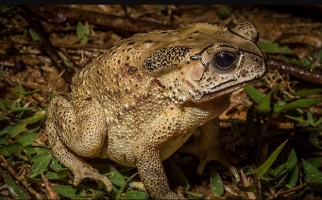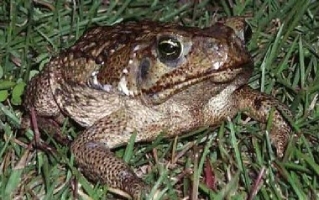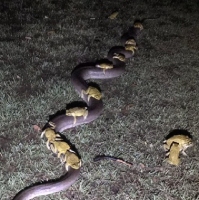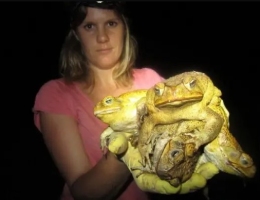Cane toads have caused a stir in Australia, and it’s not positive. These big, warty creatures come from Central and South America, not Queensland’s dry lands. Brought in 1935 to solve a farming issue, they instead spread widely, impacting nature as invaders. So, what’s their story, and how do they shake things up?
How Cane Toads Found a Home in Australia

In the 1930s, Australia’s sugarcane farmers were in a bind because beetles kept chewing through their crops. They needed a hero, so they turned to cane toads, known for eating bugs back in South America. In 1935, 102 toads arrived in Queensland with high hopes of saving the harvest. Sadly, the beetles didn’t care, and the toads found a new home instead.
That small group quickly became a massive population, breeding wildly in Australia’s warm climate. The plan to control pests flopped, and farmers watched as cane toads spread beyond sugar fields. Today, they stretch from Queensland to Western Australia, a reminder of a fix gone wrong. It’s a classic case of good intentions leading to big trouble.
Ecological Impact

Cane toads pack a nasty surprise with their toxicity, thanks to bufotoxin in glands behind their shoulders. Native predators like northern quolls don’t stand a chance when they try to eat these toads. One bite can kill, and in tropical areas, quoll numbers have dropped by as much as 80%. Other animals, like yellow-spotted monitor lizards, suffer too, with populations shrinking fast after toads arrive.
Snakes aren’t safe either, especially species like death adders that hunt amphibians. The arrival of cane toads often means a wave of predator deaths, hitting ecosystems hard. Big animals disappear, leaving gaps that nature struggles to fill. It’s a harsh lesson in how one species can throw everything off balance.
Adaptation and Resilience

Not every animal gives up when cane toads show up; some find ways to cope. Birds like ibises and hawks have learned to eat them without trouble by avoiding the poison glands. Smaller toads carry less toxin so that predators can survive a taste and wise up. Goannas, for instance, start steering clear after a bad experience.
Snakes are adapting, too, with red-bellied black snakes showing a growing dislike for cane toads. Rats and ants join the fight, munching on baby toads with no issues. These survivors prove that nature has a knack for bouncing back. It’s not a total win, but it shows resilience in the face of invaders.
Indirect Effects on Ecosystems
When cane toads eliminate predators, the effects ripple through ecosystems in unexpected ways. Prey species like small lizards and crimson finches suddenly thrive without their hunters. Scientists call this a trophic cascade, where one change triggers a chain reaction as the balance tips, vegetation and insect life shift, too.
Fewer scavenging lizards in southern Australia mean carrion sticks around longer than it should. Brush turkeys step in to fill the gap, altering the scene even more. These knock-on effects show how deeply cane toads reach into nature. One warty intruder can reshape a whole habitat over time.
Human Interaction and Control Measures

Aussies aren’t sitting back; they’re tackling cane toads head-on with community action. Groups organise events like the Great Cane Toad Bust, pulling nearly 200,000 toads out of the wild in a single go. It’s a hands-on way to slow their march across the country. Scientists also pitch in, tracking toads with radios to see where they’re headed.
Some ideas get creative, like releasing tiny “teacher toads” to train predators to avoid the big ones. In the Kimberley, this trick helped goannas survive better, giving nature a break. Others suggest eating toads as a control method, with shows like Eat the Invaders promoting them as sustainable food. It’s a quirky fix, but it might just work.
Even so, the toads keep hopping into tough spots like deserts around Longreach. They shouldn’t survive there, but dams and ponds keep them going. People keep trapping and brainstorming because the stakes are high. It’s a long fight to protect what’s left of the wild.
Conclusion
Cane toads tell a messy story about what happens when humans move species around. They were meant to save crops but ended up hurting wildlife instead. Predators die, ecosystems twist, and yet some animals adapt over time. Efforts to control them, from busts to bold ideas, show a will to fix the mess. Australia’s nature is strong; having faced rabbits and foxes before, the cane toads are just another challenge.

